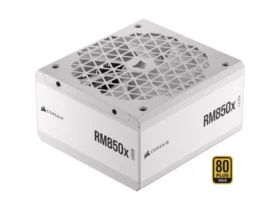Let’s see some valuable tips for buying the new graphics card. How to choose the best one for you?
If you’re looking to buy a new graphics card, it can be hard to know what your options are. There is so much variety available that the process can be daunting and confusing. This blog post will help simplify this process by providing 7 tips to consider when buying your new graphics card.
So, you are looking to buy a new graphics card. This is a big step in updating your computer and making it more powerful for the demanding tasks of the world of tomorrow.
However, there are so many different options available that we understand why this can be confusing – what do I need? How much should I spend on such a thing? What will my card experience be like in the future?
Buying any type of technology these days is always complicated because they evolve every day; however, if you take the time to consider a few questions before launching into the purchase of one (or two!), chances are you will find yourself feeling confident in researching and purchasing an item that will last long enough that you haven’t wasted your hard-earned money.
By following these tips, you will be able to find the best graphics card for your gaming PC creation needs. There are some important factors to consider when making this purchase, so make sure you don’t miss any.
Tips for buying the new graphics card
These are the five tips for buying a graphics card. If you follow them, you should find yourself with a product that will meet your needs for years to come.
Be budget conscious
the first thing you need to consider when buying a new graphics card is your budget. You want to make sure the card fits into what you’re spending, without going over. Knowing this in advance can help narrow down your choices and take some of the stress out of shopping around for one.
If you have a large budget, you will find that there are more options to choose from. You may want to consider the power of your gaming laptop and what it needs to run smoothly.
The best graphics cards for gaming aren’t always the most expensive. You may find a deal on one that has more power than you’d need, but is still quality and will work just fine on your computer.
Choose a reputable brand
the next factor to consider before buying any item is where it comes from. When choosing a graphics card, be aware of which brands are trustworthy or not; brands like EVGA have been known as quality cards in their price range, while other companies may offer better deals but with a patchy trade-off that makes them less desirable overall. Be sure to research the company that interests you the most before buying.
The more popular the brand, the more likely you are to find it in a store near you. This should help make your search quicker and easier for when you’re ready to buy your new graphics card. If you are looking for a cheaper card, be sure to speak to the store manager and find out if they will match competitor prices. The most popular brands are EVGA, ASUS, MSI, Gigabyte.
EVGA: A company specializing in video cards, motherboards and other computer hardware components. They are one of the most popular brands for graphics cards; the performance is known to be of high quality with competitive pricing as an added bonus.
ASUS: Another leading name in the industry. Their products have been highly recommended by customers who appreciate their long life and reliability. Prices reflect this reputation, but they often offer more value than you pay for when you consider how long your system will last before you need new parts.
MSI: MSI has become known as a reliable option for purchasing computers or any related equipment such as graphics cards due to its competitively priced items coupled with reliable customer support should you run into any problems.
Gigabyte: A company that specializes in PC hardware such as graphics cards, motherboards, and more. They have been recognized by many customers for their high quality products at reasonable prices; this is usually one of the most popular brands recommended for people who don’t want to break the bank but still want great performance with reliable support thanks to its close ties to the industry.
Think about what you want to get from your new graphics card
the second thing to think about when buying a graphics card is what you want to get out of it. If you are looking for the best performance, your best choice would be the one with high clock speeds and powerful cooling systems that can take advantage of those capabilities.
If you’re happy with something that will have decent horsepower but won’t break any records or set new standards in terms of frame rates, then there may not be the same need for more expensive cards on your list.
You may also find yourself quite happy with some budget options if they meet all of the other criteria already mentioned; don’t let the price dictate which product is right for you.
One of the most important things to consider is what you want from your graphics card. If performance is critical, one with high clock speeds and good cooling capabilities would be the best choice for most people; this should also apply if you’re looking for something affordable that still delivers decent frame rates on average games.
If price alone determines which product suits you best, you may not always need to spend more money than you need or want when it comes to buying new parts like a graphics card; try to find out as much as possible about the different options before making any decisions so that your purchase can reflect what matters most to you personally.
Consider the size and form factor
the size of your graphics card will also affect which one is right for you and what kind of space the other components have inside a PC case; typically, most people would prefer something that doesn’t take up too much space to avoid cooling problems or to fit it right into their system.
PCI Express cards are larger than DVI connectors, but that means they require more power because they also run at higher clock speeds, so be sure to take that into account when making your decision on either type – how much space is available in the first place can determine if the PCI-Express cables can be inserted inside. One thing to keep in mind here is that some PCI Express cards come with their own power cables for when there aren’t enough of them inside the PC case.
PCI-express – often larger cards with a length that doesn’t fit some desktops; these are mainly used by gamers who don’t have much space on their PC case due to other components taking up more space than expected such as hard drives and power supplies.
Micro ATX: Smaller but still longer than full-sized motherboards, this module was designed specifically for high-performance gaming PCs where available space inside the case is limited, so they were built as an alternative to long video cards mentioned above.
Mini ITX: Typically used within systems where space is scarce, Mini-ITX cards take up less space inside a PC case without compromising performance or functionality.
ATX: The most common form factor for PCs, graphics cards work in any system, but require more power from your power supply to run; they are usually long and can be difficult if there is not enough space available due to their size.
Determine your connectivity requirements
the graphics card should also consider which ports are available on your current system or where you will connect it.
PCI Express Slots – Provide the best performance for gaming and work with any type of interface, but most desktops don’t ship with this slot, so they would need an expansion port installed which is often more expensive than other options.
DVI – a connection that has become increasingly popular due to its low-cost nature; DVI can usually only use digital signals (no audio). HDMI / DisplayPort: There are many different types of connectors that can be used depending on what your computer supports, how much money you want to spend, and even personal preference. These two standards both have their advantages in terms of signal quality, size and flexibility.
Check your power requirements
for a graphics card to work properly, it also needs the right type of power supply; this is usually provided by an external adapter that plugs into a wall outlet, but some cards have the option built in while others require separate connections from the power supply (power supply).
The type of connection it uses can also play an important role in the amount of power needed – PCI Express slots use multiple DVI connectors which are still different from the HDMI or DisplayPort options. This means that if you want high performance without having to upgrade other parts like the PC case with extra cables, make sure you have one that connects via the PCIe interface so you don’t need an extra power supply.
Ray Tracing, the next level of play
one of the most exciting developments in gaming technology is Ray Tracing, which allows for some amazing new visuals that can only be found on NVIDIA cards thanks to their unique hardware.
Ray tracing mimics the behavior of light in the real world by projecting “rays” from a single point and showing what they hit and scattering surfaces; this technique has been used extensively in films such as Blade Runner, but will now soon be available to gamers with something called RTX as well.
The first games using this are already here, including Metro Exodus alongside Battlefield V later this year, so you won’t have to wait long for these incredible scenes to come to life before your eyes.















Leave a Reply
View Comments